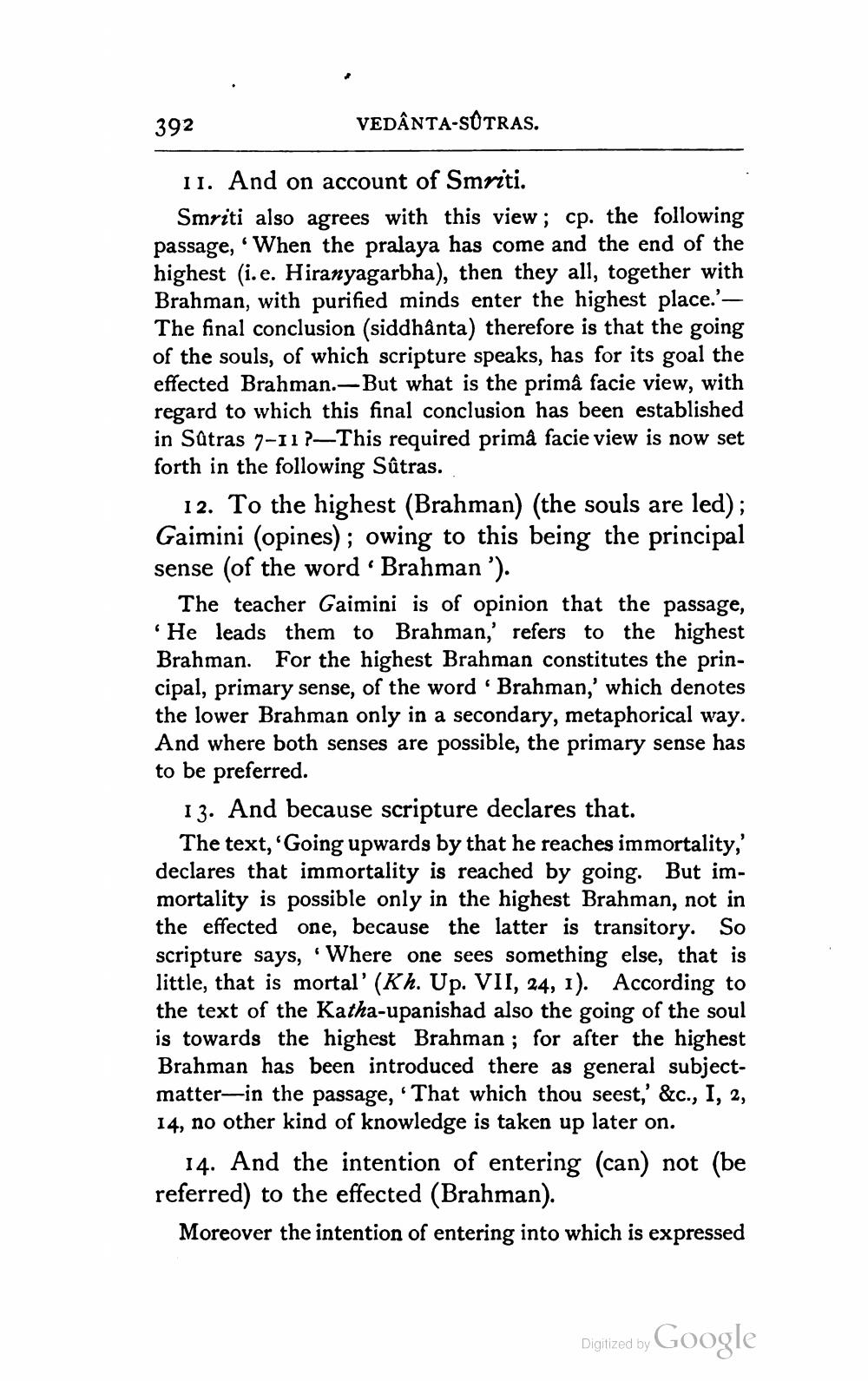________________
392
VEDÂNTA-SOTRAS.
11. And on account of Smriti.
Smriti also agrees with this view; cp. the following passage, When the pralaya has come and the end of the highest (i.e. Hiranyagarbha), then they all, together with Brahman, with purified minds enter the highest place.'The final conclusion (siddhanta) therefore is that the going of the souls, of which scripture speaks, has for its goal the effected Brahman. But what is the primâ facie view, with regard to which this final conclusion has been established in Satras 7-117—This required prima facie view is now set forth in the following Sûtras.
12. To the highest (Brahman) (the souls are led); Gaimini (opines); owing to this being the principal sense (of the word · Brahman ').
The teacher Gaimini is of opinion that the passage, * He leads them to Brahman,' refers to the highest Brahman. For the highest Brahman constitutes the principal, primary sense, of the word 'Brahman,' which denotes the lower Brahman only in a secondary, metaphorical way. And where both senses are possible, the primary sense has to be preferred.
13. And because scripture declares that.
The text, 'Going upwards by that he reaches immortality,' declares that immortality is reached by going. But immortality is possible only in the highest Brahman, not in the effected one, because the latter is transitory. So scripture says, Where one sees something else, that is little, that is mortal' (Kh. Up. VII, 24, 1). According to the text of the Katha-upanishad also the going of the soul is towards the highest Brahman; for after the highest Brahman has been introduced there as general subjectmatter-in the passage, "That which thou seest,' &c., I, 2, 14, no other kind of knowledge is taken up later on.
14. And the intention of entering (can) not (be referred) to the effected (Brahman).
Moreover the intention of entering into which is expressed
Digitized by
Digized by Google




